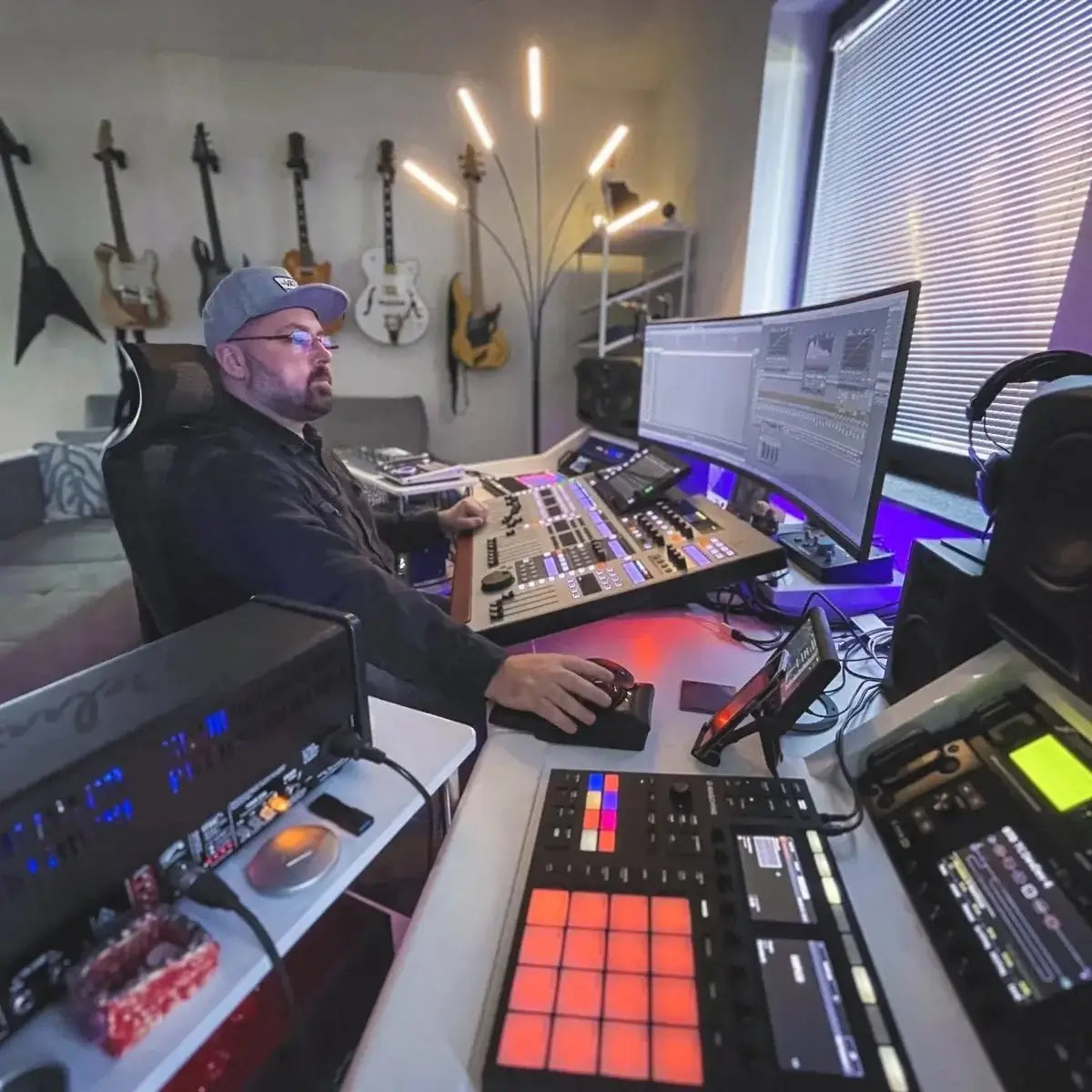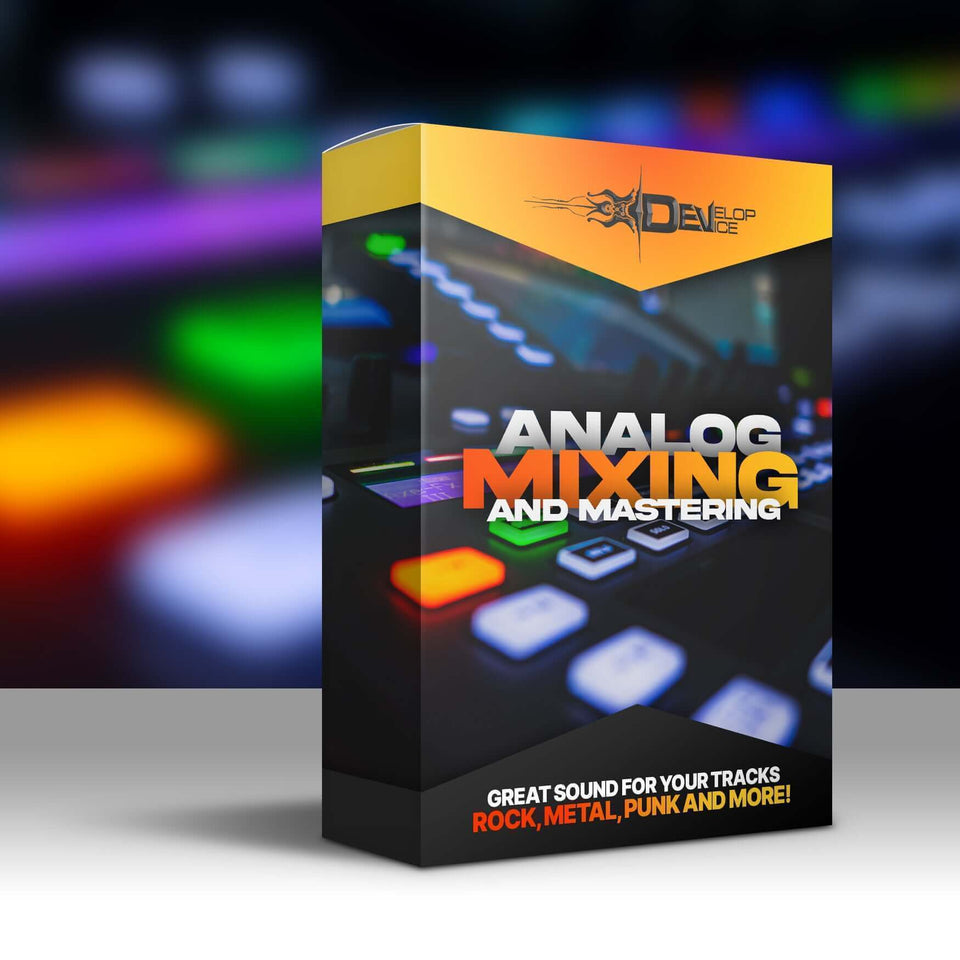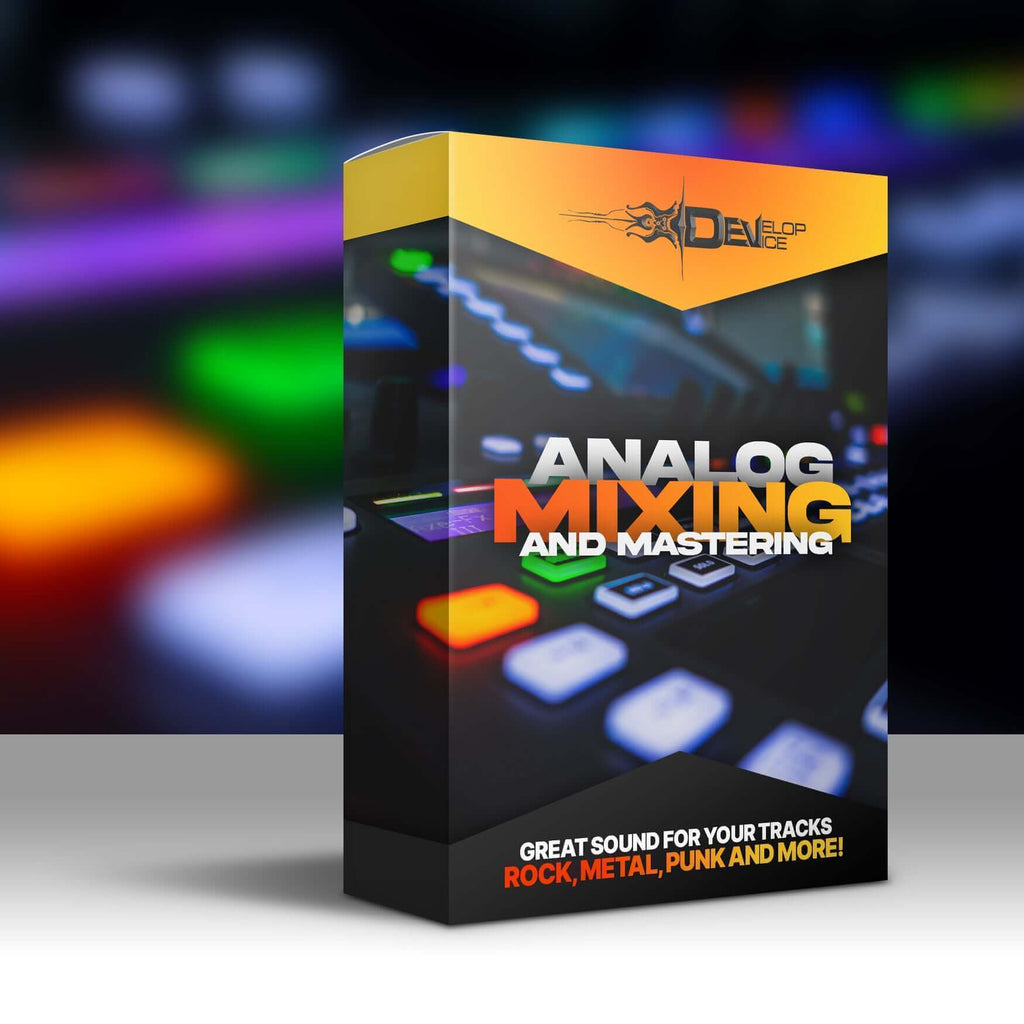10 essential points for a great modern metal mix

Modern metal has become an incredibly popular genre in recent years, with its unique blend of heavy riffs, intricate melodies, and aggressive vocals. But getting the perfect mix for a modern metal track can be a challenging task. There are several factors to consider, from the instrumentation to the production techniques. In this article, we will discuss 10 essential points for a great modern metal mix.
1. Clarity
Clarity is the foundation of a great modern metal mix. Without clarity, your mix will sound muddy and indistinct, and all the energy and power of your instruments and vocals will be lost. Clarity is achieved through careful EQ and panning techniques.
EQ is one of the most important tools in modern metal mixing, and it's crucial to use it effectively to achieve clarity. Each instrument and vocal should have its own distinct frequency range, and careful EQing can help to bring out the best in each sound. For example, boosting the mid-range frequencies can help guitars to cut through the mix, while reducing the low-end frequencies can prevent muddiness in the mix.
Panning is also important in achieving clarity. By panning each instrument and vocal to its own position in the stereo field, you can create a sense of space and separation in the mix, which helps to prevent muddiness and overlapping frequencies.
2. Compression
Compression is an essential tool in modern metal mixing. It helps to even out the levels of the different instruments and vocals, giving the track a cohesive and polished sound. However, it's important not to overuse compression, as this can lead to a loss of dynamics and energy.
When using compression in modern metal mixing, it's important to use it selectively and carefully. Start by setting the threshold so that it only engages during the loudest parts of the mix, and use a ratio of around 3:1 to start with. It's also important to use fast attack and release times to preserve the energy and punch of the instruments and vocals.
3. EQ
As mentioned in the first point, EQ is a critical tool in modern metal mixing. Each instrument and vocal should have its own distinct frequency range, and careful EQing can help to bring out the best in each sound.
In modern metal, the guitars are usually the focal point of the mix, and getting the guitar tone right is essential. Use a high-pass filter to remove any unnecessary low-end frequencies that may muddy up the mix. Boosting the high-mids and highs can help to give the guitars more definition and bite, while cutting the low-mids can help to prevent them from clashing with other instruments in the mix.
The bass is also a crucial element in modern metal, and getting the bass tone right is essential for a balanced and powerful mix. Use a low-pass filter to remove any unnecessary high-end frequencies that may clash with the guitars. Boosting the low-end frequencies can help to give the bass more power and presence in the mix.
4. Reverb
Reverb is a powerful tool in modern metal mixing, helping to create a sense of space and depth in the mix. However, it's important not to overdo it, as too much reverb can make the mix sound muddy and indistinct.
When using reverb in modern metal mixing, it's important to use it sparingly and carefully. Use short decay times and early reflections to create a sense of space without overwhelming the mix. It's also important to use different types of reverb for different instruments and vocals, to create a sense of depth and separation in the mix.
5. Automation
In modern metal, automation can be used to create build-ups and breakdowns, to highlight different instruments and vocals at different times, and to create a sense of movement and energy in the mix. For example, automating the levels of the drums during the chorus can help to create a sense of intensity and power, while automating the panning of the guitars during a solo can help to create a sense of movement and excitement.
6. Drum Processing
Drums are the backbone of modern metal, and getting the drum sound right is essential for a great mix. The key to a great drum sound is careful processing, including EQ, compression, and reverb.
When processing drums in modern metal mixing, it's important to start with a solid recording. Make sure the drums are well-tuned and mic'd up correctly, and consider using a sample library to enhance the sound. Then, use EQ to remove any unwanted frequencies and to shape the sound of each drum. Compression can be used to even out the levels and to add punch and power, while reverb can be used to create a sense of space and depth.
7. Vocal Processing
Vocals are a crucial element in modern metal, and getting the vocal sound right is essential for a powerful and engaging mix. The key to a great vocal sound is careful processing, including EQ, compression, and effects.
When processing vocals in modern metal mixing, it's important to start with a solid recording. Make sure the vocals are well-performed and mic'd up correctly, and consider using multiple takes to create a sense of depth and richness. Then, use EQ to shape the sound of the vocals and to remove any unwanted frequencies. Compression can be used to even out the levels and to add presence and power, while effects such as delay and reverb can be used to create a sense of space and depth.
8. Saturation
Saturation is a powerful tool in modern metal mixing, helping to add warmth and depth to the mix. Saturation can be applied to individual tracks or to the mix as a whole, and can be used to add subtle harmonic distortion or to create a more aggressive and powerful sound.
When using saturation in modern metal mixing, it's important to use it carefully and selectively. Start by applying a small amount of saturation to individual tracks or to the mix as a whole, and use your ears to determine the right amount. Too much saturation can lead to a loss of clarity and definition in the mix, so use it sparingly and with caution.
9. Stereo Imaging
Stereo imaging is an important technique in modern metal mixing, helping to create a sense of space and separation in the mix. By using techniques such as panning, stereo widening, and mid-side processing, you can create a more interesting and engaging mix.
In modern metal, the guitars are usually the focal point of the mix, and stereo imaging can be used to create a sense of width and depth in the guitar sound. Use panning to place each guitar in its own position in the stereo field, and consider using stereo widening or mid-side processing to create a more expansive sound.
10. Mastering
Mastering is the final step in the modern metal mixing process, and it's essential for achieving a polished and professional-sounding mix. The mastering process involves applying a series of tools and techniques to the mix, including EQ, compression, limiting, and stereo enhancement.
In modern metal, mastering can be used to enhance the power and impact of the mix. For example, using EQ to shape the tonal balance of the mix can help to bring out the best in each instrument and create a more balanced sound, while using compression and limiting can help to control the overall level and ensure that the mix sounds consistent and powerful. Additionally, stereo enhancement techniques can be used to create a wider and more immersive sound.
When mastering modern metal, it's important to use a high-quality mastering engineer who has experience in the genre. A skilled mastering engineer can help to bring out the best in your mix and ensure that it sounds great on a wide range of playback systems. Additionally, it's important to take breaks during the mastering process and to listen to the mix on different playback systems to ensure that it sounds great everywhere.










Leave a comment
All comments are moderated before being published.